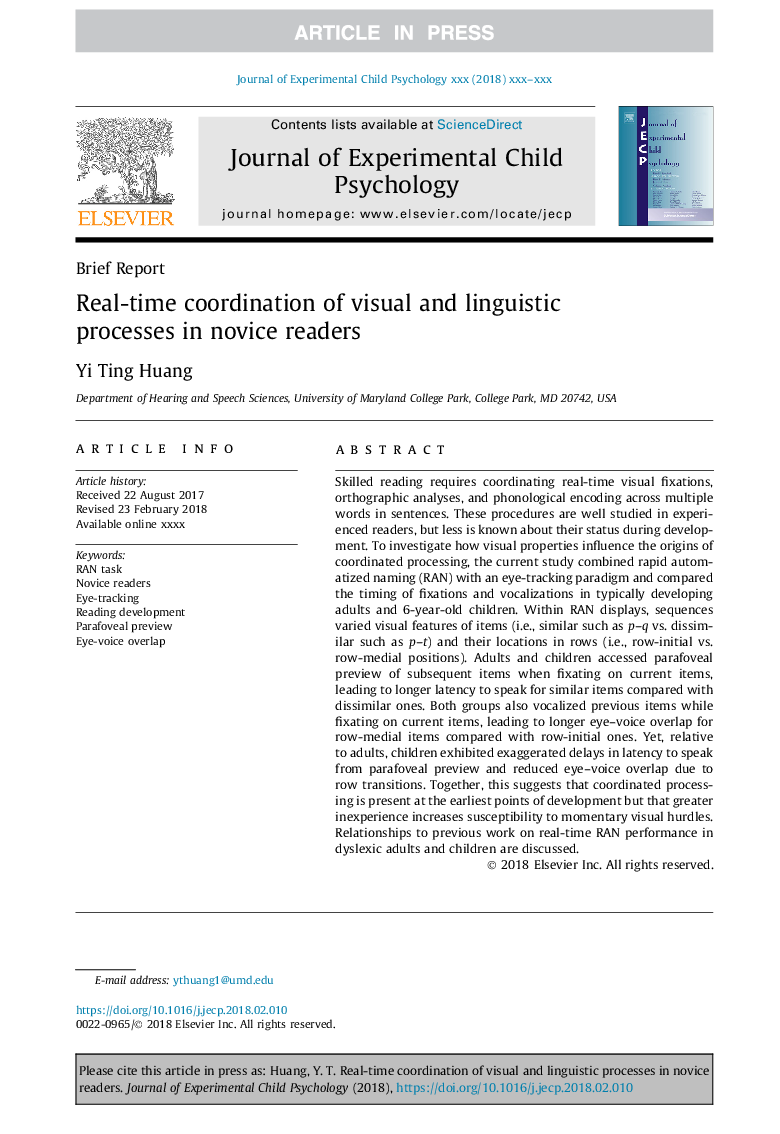| Article ID | Journal | Published Year | Pages | File Type |
|---|---|---|---|---|
| 7273880 | Journal of Experimental Child Psychology | 2018 | 9 Pages |
Abstract
Skilled reading requires coordinating real-time visual fixations, orthographic analyses, and phonological encoding across multiple words in sentences. These procedures are well studied in experienced readers, but less is known about their status during development. To investigate how visual properties influence the origins of coordinated processing, the current study combined rapid automatized naming (RAN) with an eye-tracking paradigm and compared the timing of fixations and vocalizations in typically developing adults and 6-year-old children. Within RAN displays, sequences varied visual features of items (i.e., similar such as p-q vs. dissimilar such as p-t) and their locations in rows (i.e., row-initial vs. row-medial positions). Adults and children accessed parafoveal preview of subsequent items when fixating on current items, leading to longer latency to speak for similar items compared with dissimilar ones. Both groups also vocalized previous items while fixating on current items, leading to longer eye-voice overlap for row-medial items compared with row-initial ones. Yet, relative to adults, children exhibited exaggerated delays in latency to speak from parafoveal preview and reduced eye-voice overlap due to row transitions. Together, this suggests that coordinated processing is present at the earliest points of development but that greater inexperience increases susceptibility to momentary visual hurdles. Relationships to previous work on real-time RAN performance in dyslexic adults and children are discussed.
Related Topics
Social Sciences and Humanities
Psychology
Developmental and Educational Psychology
Authors
Yi Ting Huang,
